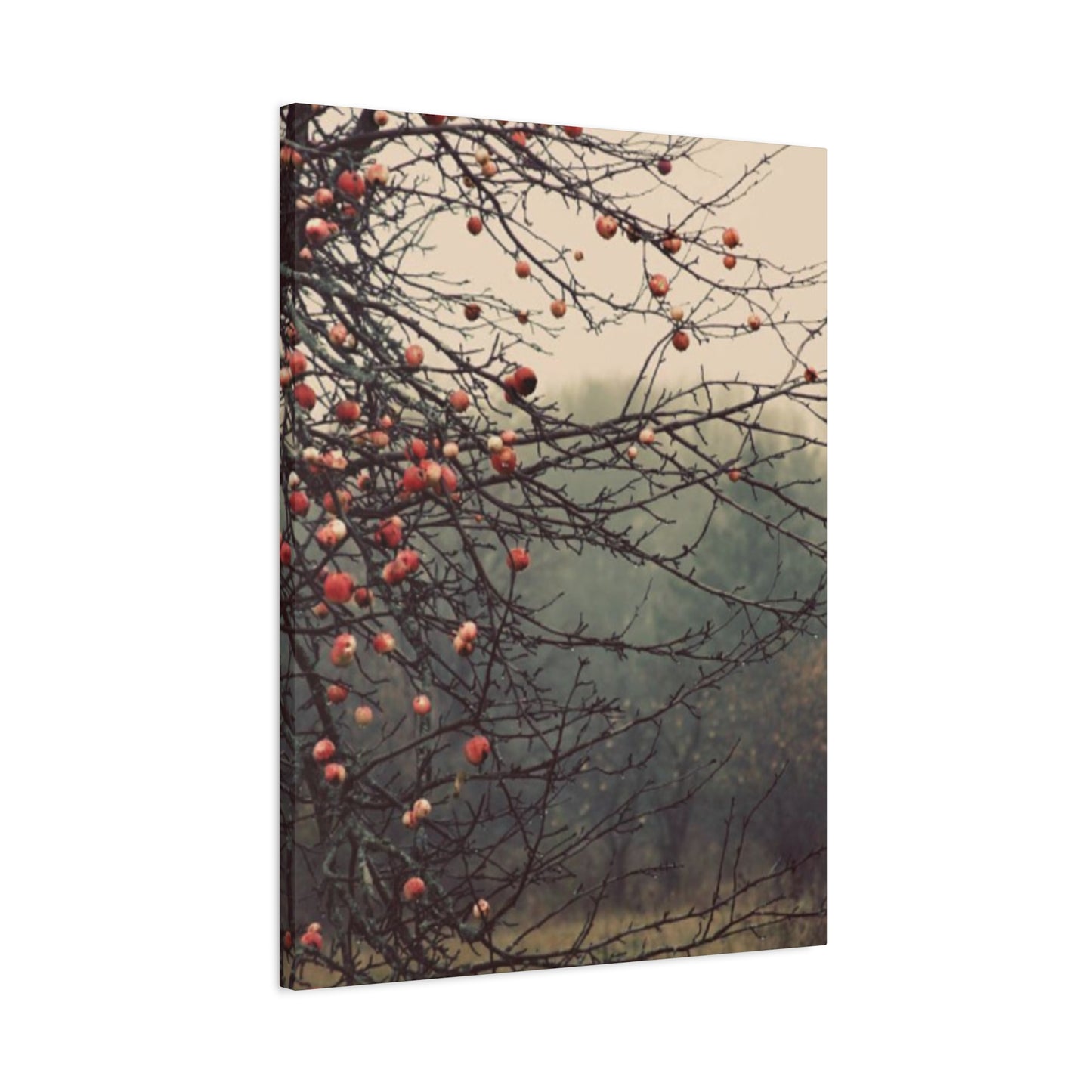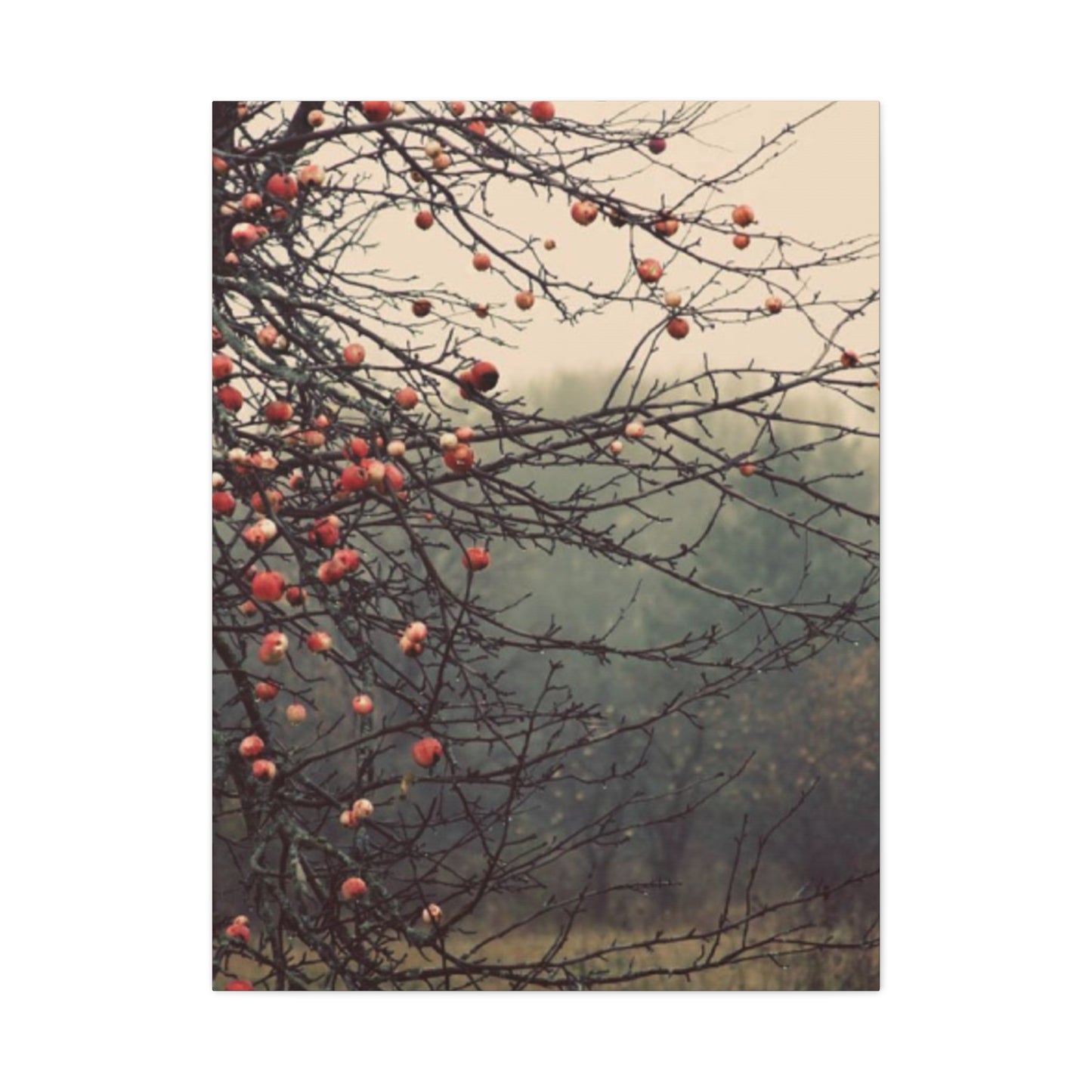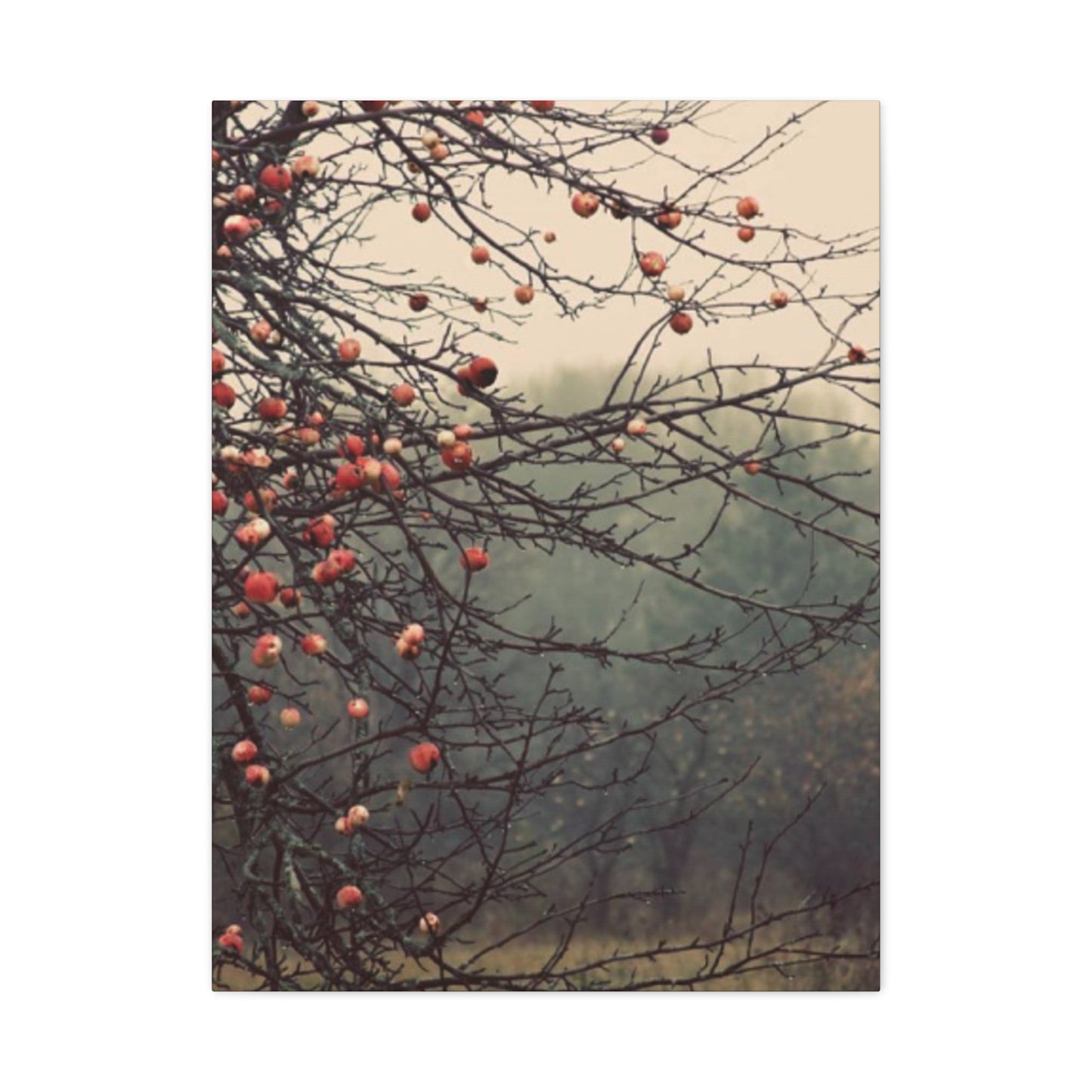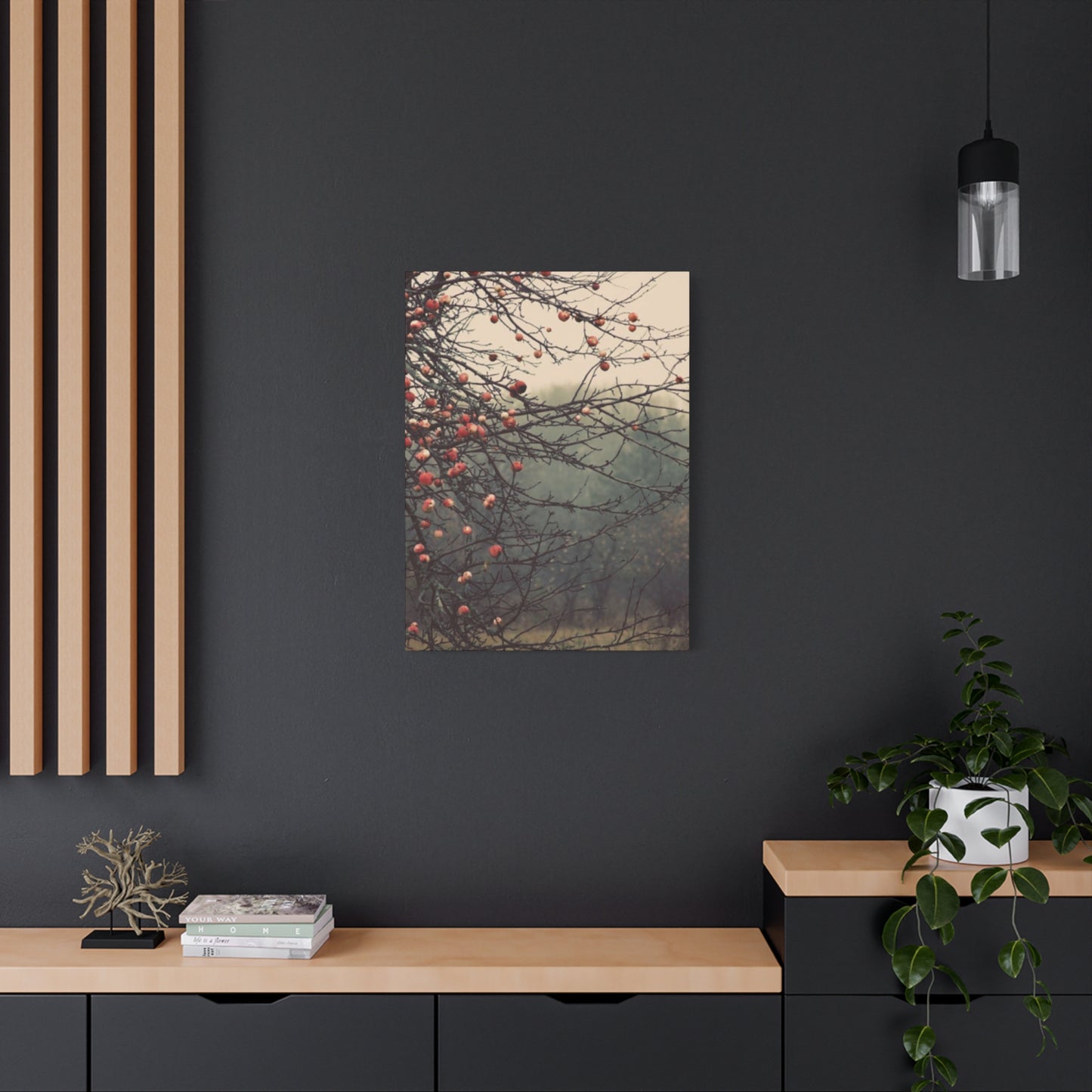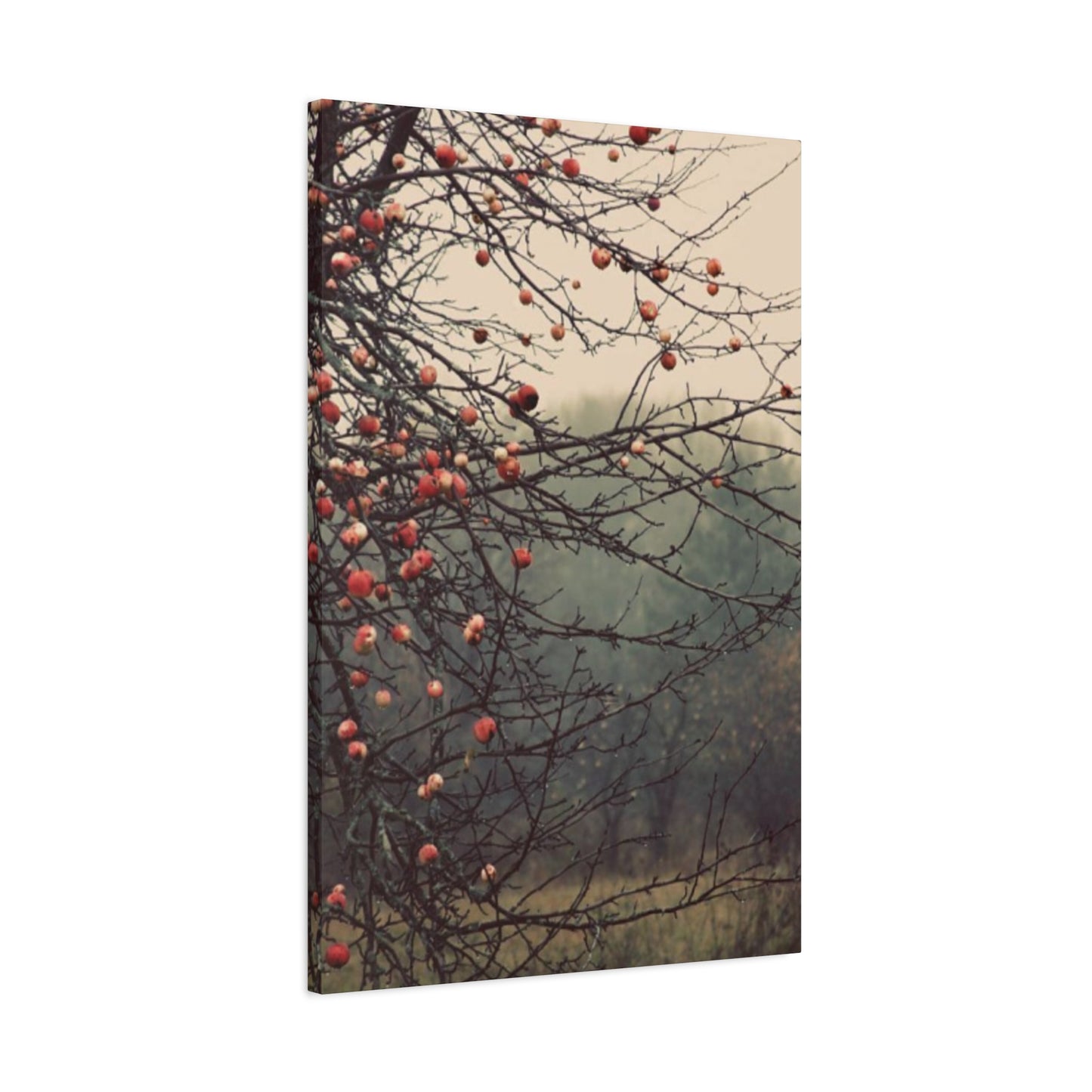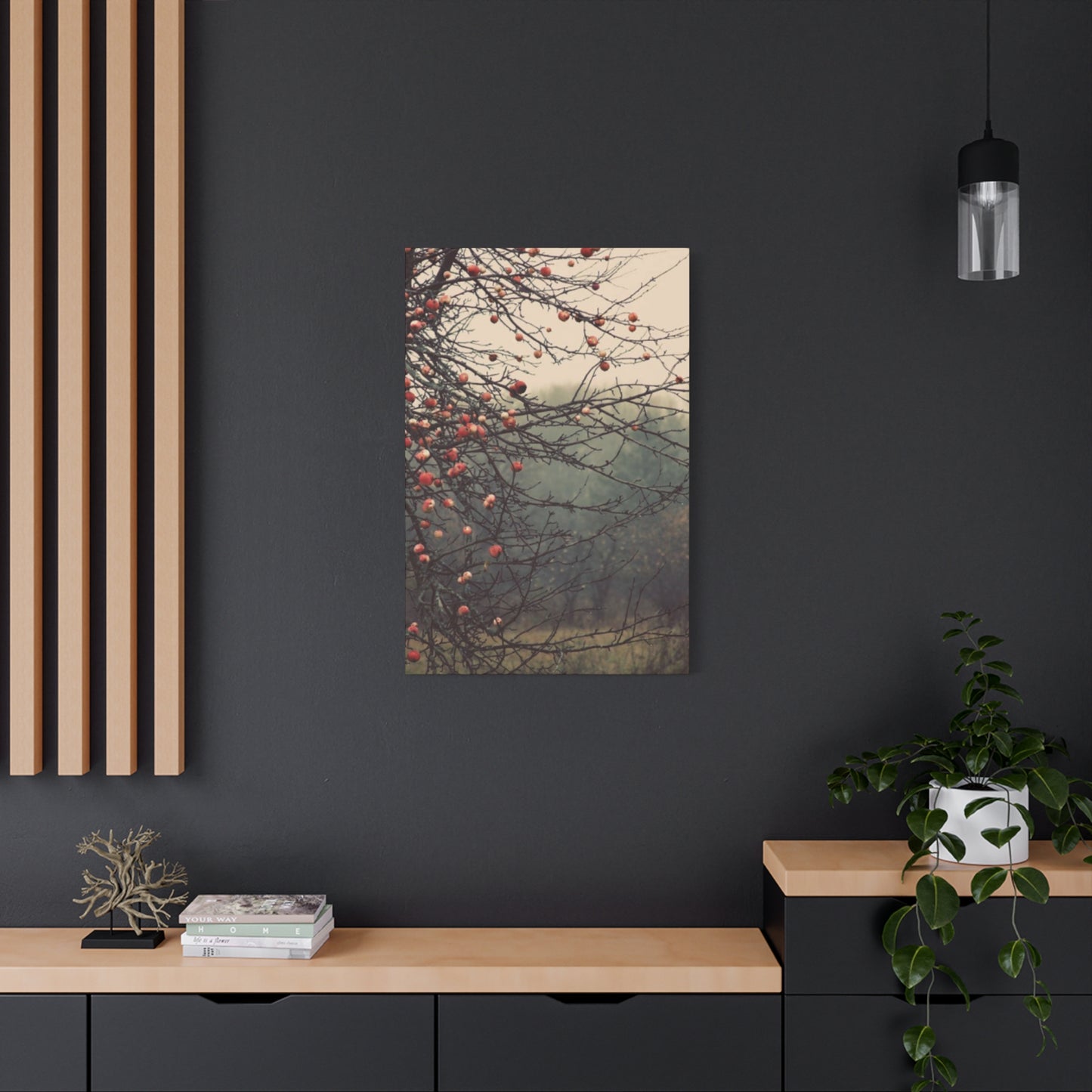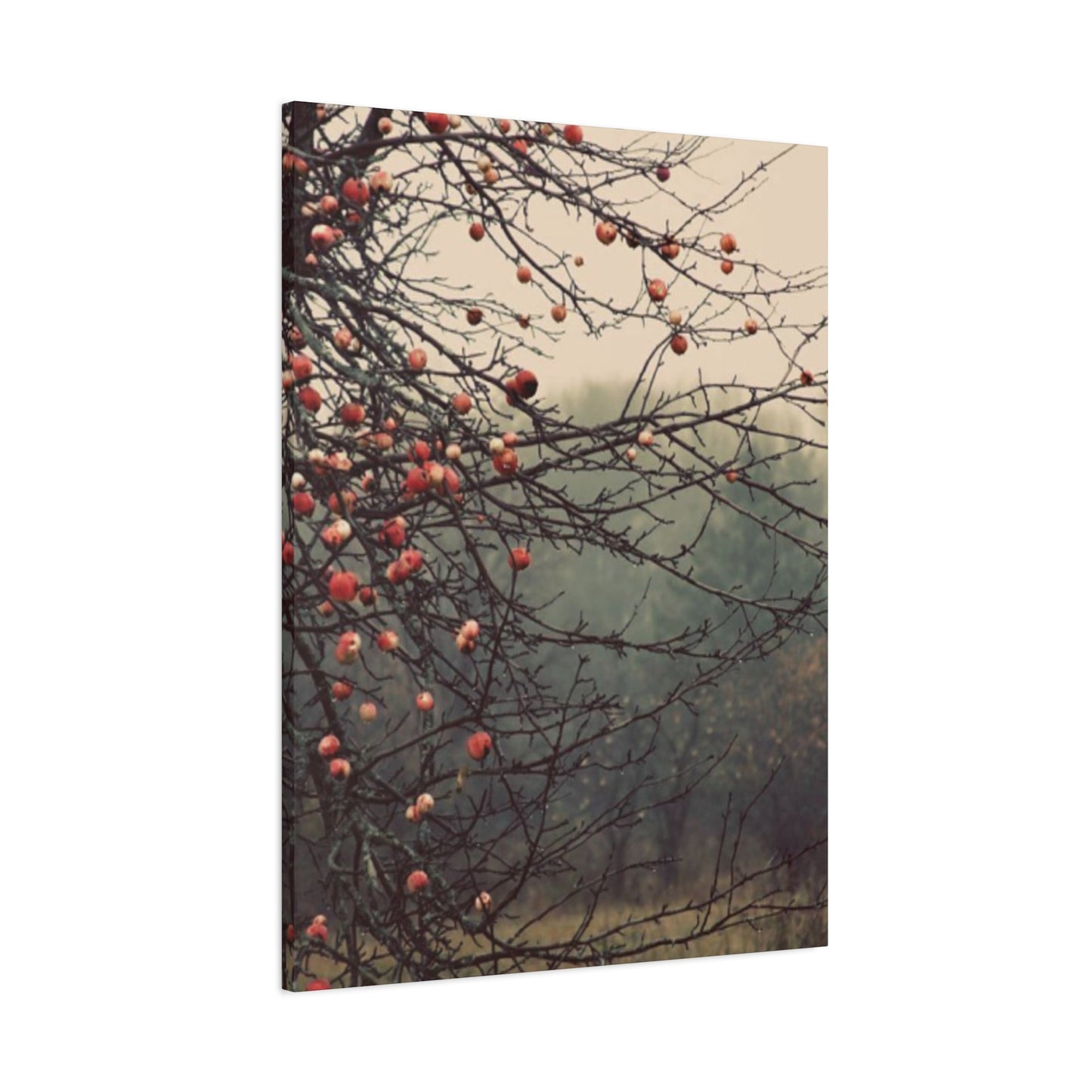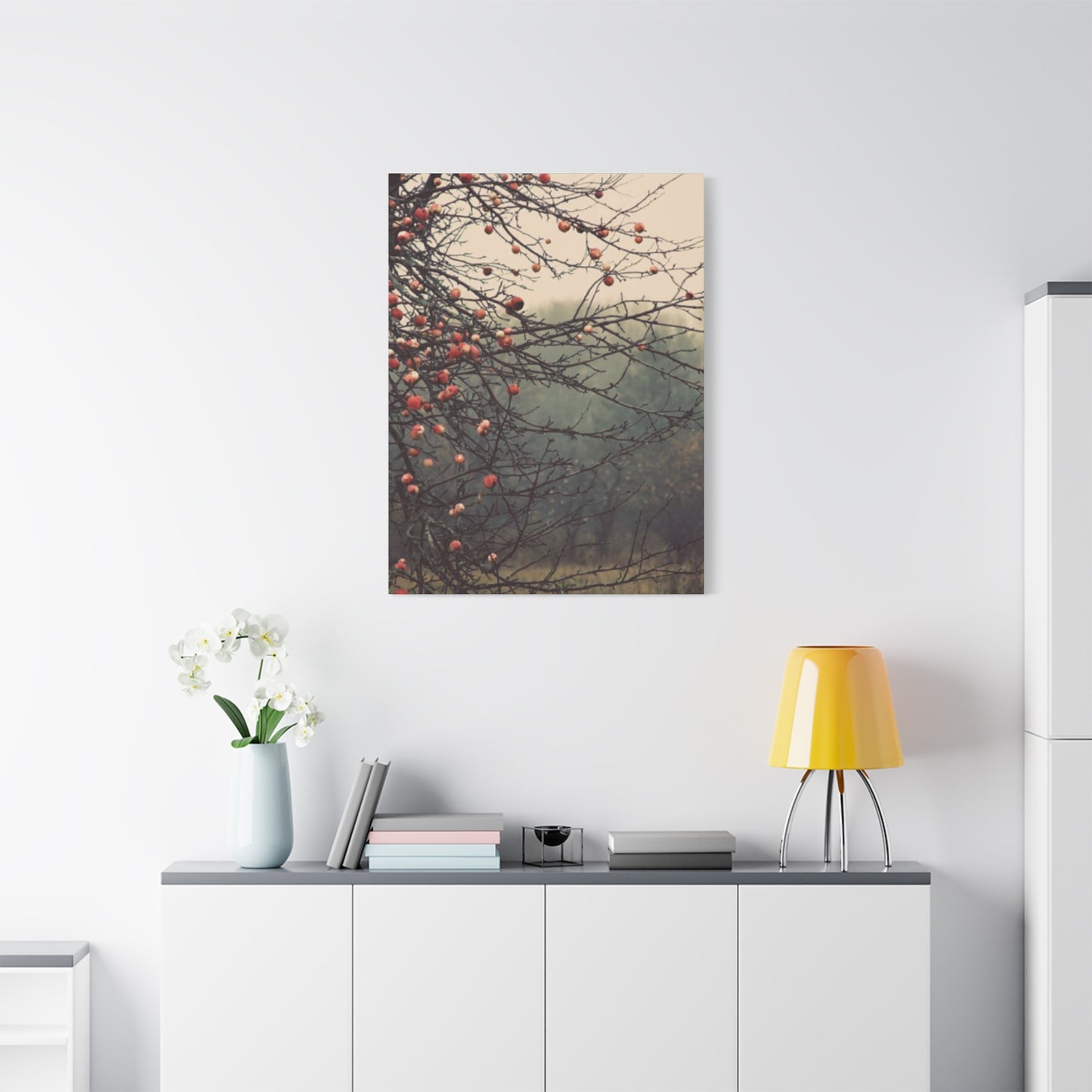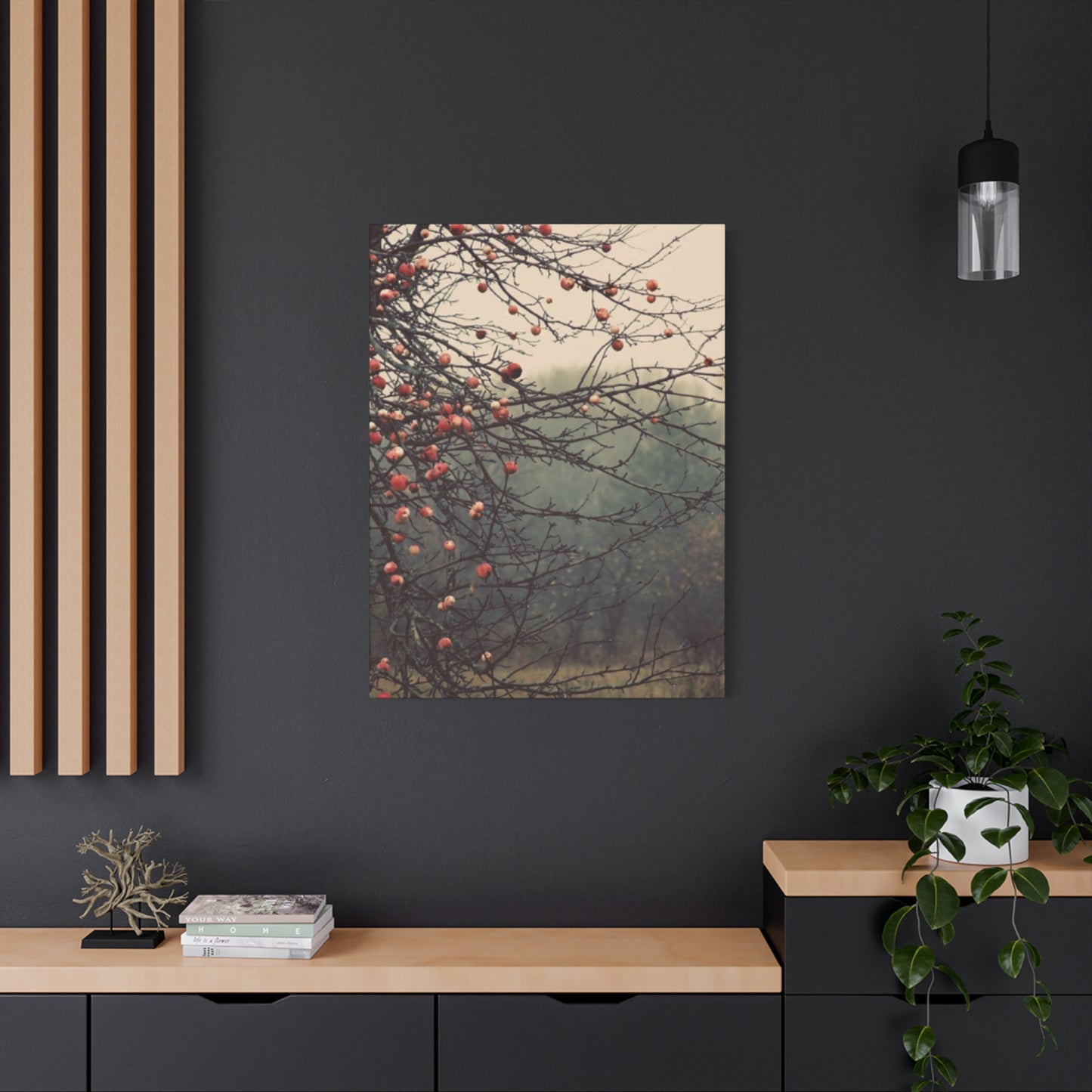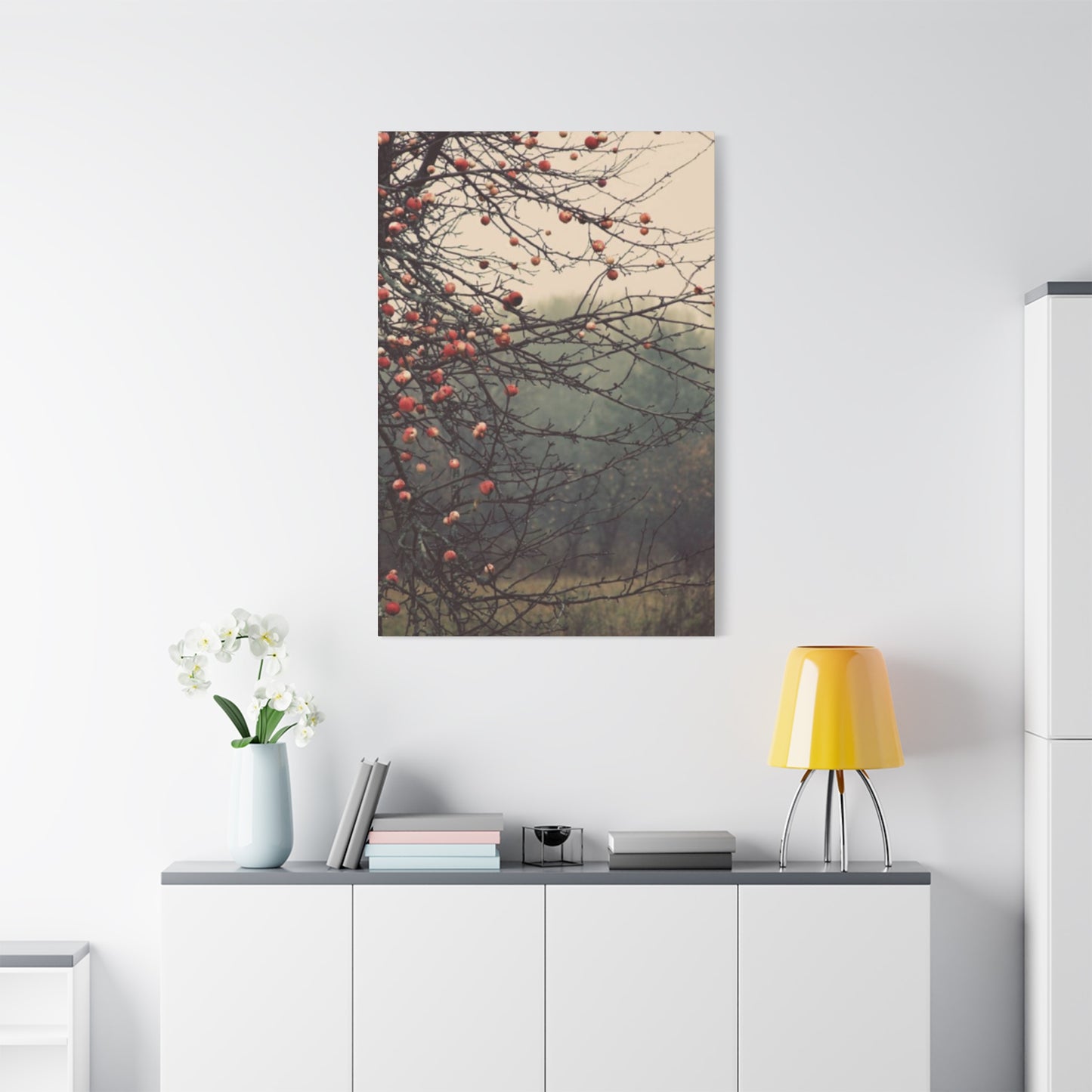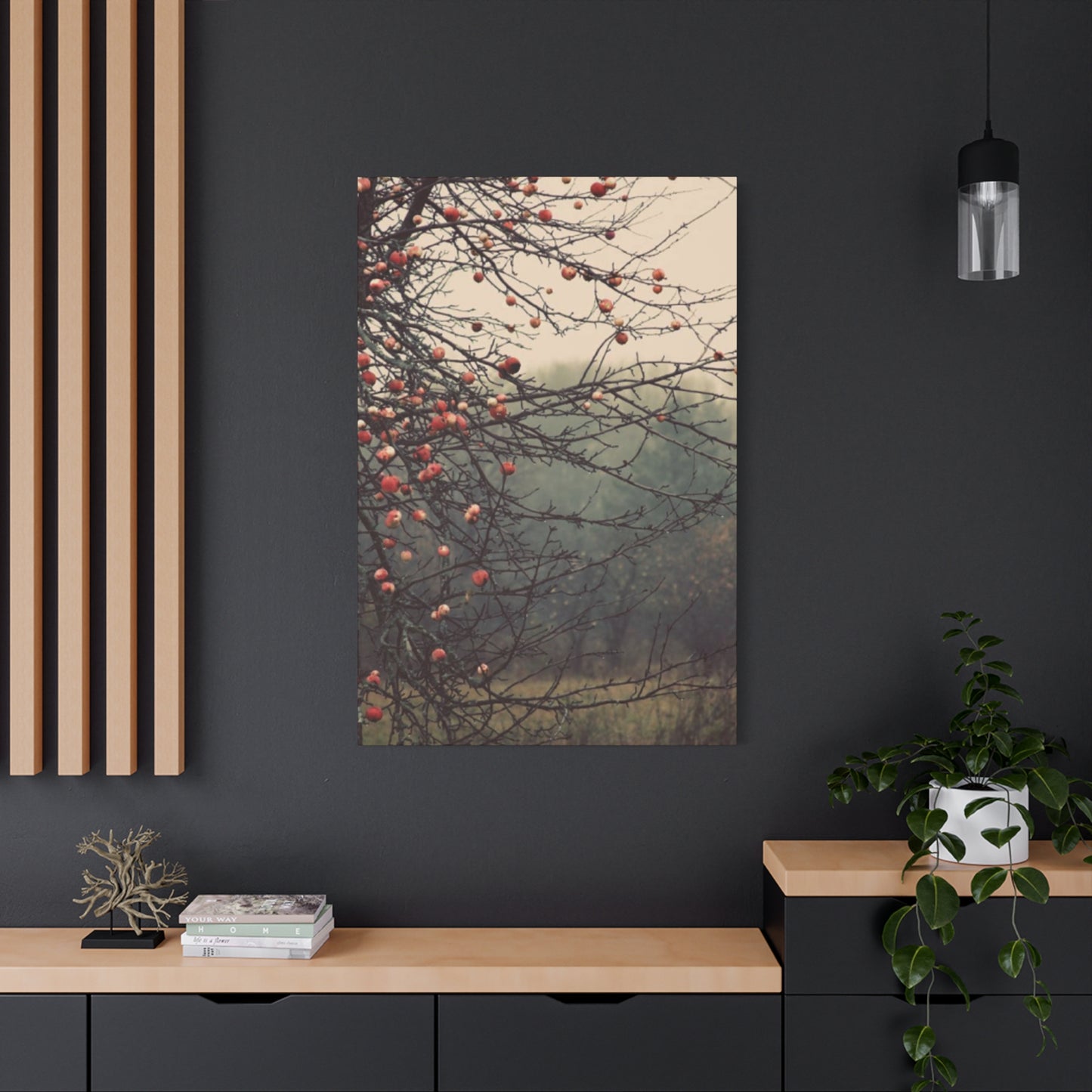Transform Any Space with the Timeless Beauty of Fruit Tree Wall Decor
Nature-inspired artwork has increasingly become a foundational element in contemporary interior design, capturing the essence of tranquility, balance, and harmony that many homeowners seek to infuse into their living spaces. Among the vast and diverse spectrum of botanical artwork, fruit tree wall decor holds a particularly unique and enduring appeal. This form of art is distinguished by its vibrant imagery, intricate detailing, and rich symbolism, combining to create a visual statement that transcends simple decoration. Fruit tree artwork evokes feelings of growth, abundance, renewal, and natural beauty—elements that deeply resonate with human emotions and aspirations. Whether displayed in a cozy kitchen where it stimulates warmth and appetite, a serene living room designed for relaxation, or a lively dining area that encourages gathering and conversation, fruit tree wall decor offers a versatile and timeless aesthetic that breathes life into any environment.
The imagery found in fruit tree artwork often includes lush foliage, delicate blossoms, and ripe, colorful fruit, all rendered with artistic precision and care. This attention to detail invites viewers to connect more deeply with nature, fostering a peaceful ambiance and a sense of calm within the home. Additionally, fruit trees have long been symbols of fertility, prosperity, and growth in various cultures, making them not just beautiful but meaningful additions to interior spaces.
Incorporating fruit tree wall art into your home allows you to blend natural inspiration with personal style effortlessly. Whether your taste leans towards bold, colorful prints or subtle, minimalist designs, there is fruit tree decor to suit every aesthetic. This timeless artwork complements a variety of interior styles—from rustic farmhouse and traditional to modern and eclectic—making it an ideal choice for those who wish to celebrate nature’s beauty while enhancing their home’s atmosphere.
The Allure of Fruit Tree Wall Art
Fruit trees have long been cherished symbols of nourishment, fertility, and prosperity across cultures and throughout history. Their presence in art and decoration is not merely ornamental but deeply meaningful. For example, the lush orange groves of the Mediterranean evoke warmth, vitality, and abundance, reflecting the region’s rich agricultural heritage. Meanwhile, in Japanese culture, the delicate cherry blossom, or sakura, is celebrated as a symbol of fleeting beauty, renewal, and the transient nature of life. These natural motifs carry emotional and cultural significance, making fruit tree imagery a powerful addition to any home’s decor. Incorporating such artwork into your living space does more than beautify the walls—it brings the calming and restorative influence of nature indoors while infusing the room with positive energy and a fresh sense of renewal.
The vivid colors and detailed textures characteristic of fruit tree wall art offer exceptional versatility, making it suitable for a wide range of interior design styles. Whether you are drawn to the minimalist elegance of Scandinavian interiors, with their clean lines and neutral palettes, or prefer the rich, eclectic layers of a bohemian aesthetic, fruit tree decor can be adapted to fit your unique taste and environment. The organic shapes of leaves, branches, blossoms, and fruit, combined with vibrant hues ranging from deep greens and bright oranges to soft pinks and whites, create a captivating focal point. This natural imagery enhances the ambiance of any room by adding life and warmth without overpowering the senses or clashing with existing decor.
Selecting the Perfect Fruit Tree Wall Decor
Choosing the ideal fruit tree artwork starts with thoughtful consideration of the mood and function of the space where it will hang. For instance, a brightly colored print featuring apples, oranges, or lemons can invigorate a kitchen or breakfast nook by stimulating appetite and encouraging lively conversation. These energetic, cheerful colors are perfect for social areas where you want to promote positivity and warmth. On the other hand, softer, pastel-toned pieces—such as those depicting peach blossoms or cherry blossoms—may be better suited for bedrooms, meditation rooms, or quiet corners. Their gentle, calming palette helps promote relaxation and a peaceful atmosphere, making them perfect for spaces dedicated to rest and rejuvenation.
The choice of materials also plays a crucial role in the overall impact of your wall decor. Traditional canvas prints provide a timeless look with rich texture and depth, ideal for classic or modern interiors. For a more rustic or industrial feel, metal or wood-based wall hangings can add an earthy, tactile quality that complements natural elements like wooden furniture or woven textiles. Some contemporary designs even incorporate three-dimensional elements such as sculpted branches or leaves, which add depth, shadow, and an interactive quality to the artwork. This tactile dimension invites viewers to engage more deeply with the piece and creates a dynamic visual experience.
Ultimately, fruit tree wall art offers not only a beautiful aesthetic but also a meaningful connection to nature’s cycles of growth and renewal. By selecting pieces that resonate with your personal style and the atmosphere you want to cultivate, you can transform any room into a harmonious sanctuary that celebrates life, abundance, and natural beauty.
Placement and Styling Tips for Fruit Tree Wall Decor
To truly unlock the transformative potential of fruit tree wall decor, thoughtful placement and styling are key. Where and how you display these artworks can dramatically influence the atmosphere and flow of your space. Large-scale prints, for example, work exceptionally well as statement pieces when positioned above prominent furniture such as sofas or dining tables. These sizable artworks serve as visual anchors that immediately draw the eye, providing a focal point around which the rest of the room’s decor can revolve. The natural forms and vibrant colors of fruit tree art inject life and energy into social spaces, encouraging relaxation and connection.
For smaller rooms or more intimate settings, consider grouping multiple smaller pieces together in a clustered arrangement to create a gallery wall effect. This approach is especially effective in hallways, staircases, or transitional spaces that might otherwise feel bland or overlooked. A carefully curated collection of fruit tree prints can turn a simple passage into an engaging visual journey through nature’s bounty, inviting guests to pause and appreciate the artistry and symbolism in each piece.
Styling your fruit tree artwork alongside complementary decor elements will enhance the overall cohesion and immersive quality of the space. Natural fibers in cushions, throws, or rugs—think linen, cotton, jute, or wool—can echo the organic textures found in the artwork, reinforcing a connection to the outdoors. Wooden furniture with visible, organic grain patterns harmonizes beautifully with the natural motifs of fruit tree art, grounding the room with warmth and authenticity. Additionally, incorporating live plants or even small potted fruit trees into the decor can deepen this effect, creating a multi-dimensional sensory experience that blends art and life.
Selecting the Ideal Fruit Tree Artwork for Your Home
When embarking on the journey of selecting fruit tree artwork, several crucial factors demand consideration to ensure your choice complements your existing decor while reflecting your personal aesthetic preferences. The process begins with understanding your home's architectural style, color palette, and the specific atmosphere you wish to create in each room.
The size of your chosen artwork plays a fundamental role in determining its visual impact. Large-scale pieces serve as commanding focal points, drawing the eye immediately upon entering a room. These substantial works are particularly effective above sofas, beds, or dining tables where they can anchor the entire arrangement. Conversely, smaller pieces offer versatility in grouping arrangements or can accent intimate corners and narrow hallways where larger works might overwhelm the available wall area.
Color harmony represents another essential consideration when selecting fruit tree artwork. The natural palette of fruit trees spans an impressive range, from the soft blushes of cherry blossoms to the rich burgundies of autumn apple orchards. Consider how these colors interact with your existing furnishings, textiles, and painted surfaces. Cool-toned fruit tree artwork featuring blues, greens, and purples creates a calming atmosphere, while warm-toned pieces incorporating reds, oranges, and yellows energize and invigorate living areas.
The medium of your chosen artwork significantly influences both its visual character and longevity. Oil paintings offer rich depth and traditional elegance, while watercolors provide delicate transparency and ethereal beauty. Photographic prints capture realistic detail and contemporary appeal, whereas hand-drawn illustrations maintain artistic charm and personal touch. Digital artwork allows for unlimited reproduction possibilities and often comes at more accessible price points.
Artistic style consideration extends beyond medium to encompass the overall approach to depicting fruit trees. Realistic representations appeal to those who appreciate detailed botanical accuracy, while impressionistic interpretations offer loose, expressive beauty. Contemporary abstract approaches to fruit tree imagery can complement modern decor schemes, whereas traditional realistic styles harmonize beautifully with classic furnishing arrangements.
The provenance and authenticity of your artwork contribute to its long-term value and personal satisfaction. Original paintings command higher prices but offer unique ownership experiences, while limited-edition prints provide accessibility to renowned artists' works. Mass-produced prints, while budget-friendly, may lack the distinctive character that makes artwork truly special.
Consider the emotional resonance of different fruit tree species when making your selection. Apple trees evoke feelings of abundance, harvest, and home comfort. Cherry trees suggest renewal, beauty, and the fleeting nature of life's precious moments. Pear trees symbolize longevity and prosperity, while citrus trees bring brightness and energy to any environment.
The Deeper Meaning Within Fruit Tree Fine Art
Throughout human history, fruit trees have carried profound symbolic significance across cultures, religions, and artistic traditions. Understanding these deeper meanings enriches the experience of living with fruit tree artwork and adds layers of personal connection to your chosen pieces.
In many cultural traditions, fruit trees represent the cycle of life, death, and rebirth. The seasonal transformation from bare winter branches through spring blossoms to summer fruit and autumn leaf fall mirrors human experiences of growth, achievement, and renewal. This symbolism makes fruit tree artwork particularly meaningful in homes where families gather, grow, and create lasting memories.
The apple tree holds special significance in Western culture, representing knowledge, temptation, and the complexities of human nature. Biblical references to the Tree of Knowledge have imbued apple imagery with philosophical depth, making apple tree artwork particularly thought-provoking in studies, libraries, or contemplative environments. The phrase "fruit of the tree of knowledge" connects apple trees to wisdom, learning, and intellectual pursuit.
Cherry trees carry different symbolic weight, particularly influenced by Japanese cultural traditions where cherry blossoms represent the ephemeral beauty of life. This mono no aware concept celebrates the bittersweet awareness of impermanence, making cherry tree artwork especially poignant in bedrooms, meditation areas, or other personal retreat environments.
Citrus trees symbolize abundance, prosperity, and positive energy across many cultures. The bright fruits and evergreen foliage represent continuous growth and unwavering optimism. Mediterranean cultures particularly associate citrus trees with hospitality and warm welcome, making lemon or orange tree artwork ideal for entryways, kitchens, and social gathering areas.
Pear trees traditionally symbolize longevity, immortality, and enduring love. Chinese culture particularly reveres pear trees for their long lifespan and reliable fruit production, associating them with stability and lasting relationships. Pear tree artwork can serve as meaningful additions to master bedrooms, anniversary celebrations, or family gathering areas.
The artistic interpretation of fruit tree symbolism varies significantly among different artists and cultural contexts. Some artists emphasize the abundance aspect through lush, fruit-heavy depictions, while others focus on the delicate beauty of blossoms or the stark elegance of winter branches. Understanding these interpretative approaches helps viewers connect more deeply with their chosen artwork.
Religious and spiritual symbolism within fruit tree artwork extends beyond Christian traditions to encompass Buddhist, Hindu, and other belief systems. The Bodhi tree under which Buddha achieved enlightenment, while technically a fig tree, has influenced broader associations between fruit-bearing trees and spiritual awakening. This makes fruit tree artwork particularly meaningful in meditation rooms, yoga studios, or other spiritually-focused environments.
Contemporary artists continue to explore and reinterpret traditional fruit tree symbolism, often combining classical themes with modern concerns about environmental conservation, sustainable agriculture, and humanity's relationship with nature. These updated interpretations speak to current environmental consciousness while maintaining connection to historical symbolic traditions.
Natural Atmosphere Through Fruit Tree Prints
Creating an authentic natural atmosphere through fruit tree prints requires careful attention to selection, placement, and supporting decorative elements that reinforce the organic theme throughout your living environment. The goal extends beyond simply hanging artwork to creating immersive experiences that transport inhabitants and guests into peaceful natural settings.
High-quality prints capture the intricate details that make fruit trees so visually compelling. Look for reproductions that preserve the subtle color variations in bark texture, the delicate veining of leaves, and the natural irregularities that distinguish living trees from stylized representations. Digital printing technology has advanced significantly, allowing for exceptional color accuracy and fine detail reproduction that rivals original artwork in visual impact.
The paper or canvas quality of your prints dramatically affects their longevity and visual appeal. Museum-quality papers resist fading, yellowing, and deterioration over time, ensuring your investment maintains its beauty for decades. Canvas prints offer texture and depth that paper prints cannot match, creating more substantial visual presence particularly in larger formats.
Arrangement strategies for fruit tree prints can dramatically enhance their natural atmosphere creation. Single large prints command attention and create immediate focal points, while collections of smaller prints allow for more complex storytelling and seasonal variation representation. Consider creating narrative sequences that follow fruit tree development through seasons or showcase different species in complementary arrangements.
Lighting considerations play crucial roles in maximizing the atmospheric impact of fruit tree prints. Natural lighting brings out the authentic colors and subtle details, making placement near windows particularly effective. However, direct sunlight can damage prints over time, requiring careful balance between visibility and preservation. Artificial lighting should complement rather than overpower the natural tones within fruit tree imagery.
Supporting decorative elements enhance the natural atmosphere created by fruit tree prints. Natural materials like wood, stone, and woven textiles harmonize beautifully with botanical artwork. Living plants create obvious connections between artwork and reality, while natural scents through candles or diffusers can engage additional senses in the atmospheric experience.
Color coordination between fruit tree prints and surrounding decor requires subtle approaches that avoid overwhelming the artwork's natural beauty. Earth tones, sage greens, warm browns, and cream colors provide excellent background palettes that allow fruit tree imagery to take center stage while maintaining harmonious overall composition.
Seasonal rotation of fruit tree prints can maintain fresh interest and reflect changing natural cycles. Spring blossom prints energize after long winters, while autumn harvest scenes create cozy warmth during cooler months. This rotating approach prevents visual stagnation and maintains dynamic engagement with your artwork collection.
The psychological impact of fruit tree prints on inhabitants and guests should not be underestimated. Research consistently demonstrates that natural imagery reduces stress, improves mood, and enhances overall well-being. Fruit tree prints specifically evoke feelings of abundance, growth, and natural harmony that contribute to positive home atmospheres.
Harmonizing Fruit Tree Art with Botanical Decorating
The integration of fruit tree artwork within broader botanical decorating schemes requires thoughtful coordination to achieve cohesive, naturally-inspired living environments. This approach extends beyond simple matching to create layered, sophisticated arrangements that celebrate nature's diversity while maintaining visual harmony throughout your home.
Plant selection becomes crucial when incorporating living botanicals alongside fruit tree artwork. Choose plants that complement rather than compete with your artwork's color palette and style. Broad-leafed plants like fiddle leaf figs or monstera deliciosa provide striking contrasts to delicate fruit tree imagery, while smaller plants with fruit-like elements such as prayer plants or begonias create subtle thematic connections.
Textile integration offers numerous opportunities to reinforce botanical themes while adding comfort and warmth to your decorating scheme. Natural fiber materials like linen, cotton, and wool harmonize beautifully with fruit tree artwork, while patterns incorporating leaves, branches, or organic shapes create subtle visual connections without overwhelming the primary artwork focus.
Color palette development requires careful consideration of both obvious and subtle botanical hues. While greens provide obvious connections to natural themes, consider incorporating the full spectrum of colors found in fruit tree cycles: soft pinks and whites of spring blossoms, rich greens of summer foliage, golden yellows and russet reds of autumn leaves, and the stark beauty of winter branch silhouettes.
Furniture selection can significantly enhance or detract from botanical decorating schemes. Natural wood pieces create obvious connections to tree imagery, while live-edge furniture maintains organic irregularities that echo nature's imperfect beauty. Avoid overly processed or synthetic materials that conflict with natural authenticity promoted by fruit tree artwork.
Lighting design within botanical decorating schemes should prioritize natural light sources while providing adequate artificial illumination for artwork appreciation. Skylights, large windows, and glass doors create connections between indoor and outdoor natural environments, while warm-toned artificial lighting maintains cozy atmospheres during evening hours.
Accessory coordination allows for personal expression within botanical themes while maintaining overall coherence. Natural materials like stone, wood, ceramic, and woven baskets provide excellent foundation pieces, while botanical books, dried flowers, and nature photography extend thematic connections throughout your decorating scheme.
Seasonal adaptation keeps botanical decorating schemes fresh and responsive to natural cycles. Rotate accessories, textiles, and smaller artwork pieces to reflect changing seasons while maintaining core fruit tree artwork as permanent anchoring elements. This approach prevents decorating fatigue while celebrating nature's constant evolution.
The incorporation of natural scents through plants, candles, or diffusers can significantly enhance botanical decorating schemes' sensory impact. Choose scents that complement rather than overpower fruit tree artwork themes: fresh green scents during spring, warm floral fragrances during summer, spicy harvest scents during autumn, and clean, crisp fragrances during winter months.
Scale relationships between fruit tree artwork and surrounding botanical elements require careful balance to prevent visual confusion or competition. Large artwork pieces can anchor arrangements of smaller plants and accessories, while collections of smaller fruit tree pieces can be distributed among larger plant groupings for integrated, cohesive presentations.
Enhancing Dining Areas with Fruit Tree Fine Art
Dining rooms present unique opportunities for fruit tree artwork integration, as the natural connection between fruit imagery and food consumption creates intuitive thematic harmony. The challenge lies in selecting and arranging artwork that enhances dining experiences while maintaining sophisticated aesthetic appeal appropriate for both casual family meals and formal entertaining occasions.
Scale considerations in dining room artwork selection often favor larger pieces that can compete visually with dining furniture while creating commanding focal points. The typical dining room arrangement centers around substantial tables and chairs, requiring artwork with sufficient presence to balance these dominant elements. However, the specific dimensions of your dining area dictate whether single large pieces or collections of smaller works best serve your decorative goals.
Placement strategies for dining room fruit tree artwork traditionally focus on walls visible from primary seating positions, ensuring diners can appreciate the artwork throughout their meal experience. However, consider unconventional placement options such as artwork visible through doorways from adjacent rooms, creating appetizing previews that build anticipation for dining experiences.
Color harmony between fruit tree artwork and dining room decor requires particular attention to how colors interact with food presentation and dining ambiance. Warm, appetizing colors within fruit tree imagery can enhance the visual appeal of meals, while cooler tones might create more formal, sophisticated dining atmospheres. Consider how artificial lighting affects color perception during evening dining occasions.
The psychological impact of fruit tree imagery in dining environments extends beyond simple decoration to influence actual dining experiences. Abundant fruit imagery can psychologically enhance appetite and satisfaction, while seasonal fruit tree depictions can inspire menu planning and seasonal eating habits. This connection between artwork and dining behavior adds functional value to decorative choices.
Practical considerations for dining room artwork include resistance to humidity, temperature fluctuations, and potential food-related accidents. Protective glass or acrylic covers may be necessary in areas prone to splashing or humidity, while proper mounting systems ensure artwork remains secure despite vibrations from nearby activities.
Lighting design for dining room fruit tree artwork must accommodate both artwork appreciation and practical dining needs. Adjustable lighting systems allow for bright illumination during artwork viewing and dimmer settings for intimate dining experiences. Consider how lighting affects both artwork colors and food presentation simultaneously.
Seasonal artwork rotation in dining areas can reflect changing food preferences and availability throughout the year. Spring blossom imagery celebrates fresh beginnings and lighter fare, while autumn harvest scenes complement heartier, comfort food preferences. This rotation keeps dining environments fresh and seasonally appropriate.
The integration of fruit tree artwork with serving pieces, table linens, and other dining accessories creates cohesive themed environments that extend artwork appreciation beyond wall-mounted pieces. Subtle thematic connections through colors, patterns, or materials can create sophisticated coordination without appearing overly matched or contrived.
Entertainment considerations become important when fruit tree artwork serves as conversation starters or focal points during dinner parties and social gatherings. Choose pieces with interesting details, cultural significance, or personal stories that can engage guests and enhance social interactions throughout dining experiences.
Sourcing Premium Fruit Tree Artwork
The modern marketplace offers unprecedented access to fruit tree artwork through traditional galleries, online platforms, artist studios, and specialized botanical art dealers. Understanding the advantages and limitations of each source helps ensure you acquire pieces that meet your quality expectations, budget constraints, and aesthetic preferences while avoiding common purchasing pitfalls.
Traditional art galleries provide opportunities to view artwork in person, assess quality firsthand, and receive professional guidance from knowledgeable staff members. Gallery representation often indicates artist credibility and established market recognition, though gallery markups can significantly increase artwork prices compared to direct artist purchases.
Online marketplaces have revolutionized art accessibility, offering vast selections from international artists at various price points. However, online purchasing requires careful attention to return policies, condition descriptions, and seller reputation ratings. High-resolution photography helps assess artwork quality, but cannot completely replace in-person examination for critical purchases.
Direct artist purchases through studio visits or online portfolios often provide best value while supporting artists more completely than gallery purchases. Many contemporary artists maintain professional websites showcasing their complete portfolios, commission opportunities, and purchasing options. Social media platforms increasingly serve as artist portfolio spaces and direct sales channels.
Art fairs and festivals offer concentrated opportunities to view numerous artists' works while comparing styles, prices, and quality levels. These events often feature emerging artists alongside established names, providing opportunities to discover new talent at more accessible price points. Many festivals also offer installation and framing services for convenient purchasing experiences.
Auction houses occasionally feature botanical artwork including fruit tree pieces, sometimes offering exceptional pieces at competitive prices. However, auction purchasing requires careful research, condition assessment, and firm bidding limits to avoid overpaying in competitive environments.
Custom commission work allows for completely personalized fruit tree artwork that perfectly matches your specific requirements, color preferences, and size needs. Commissioned pieces often cost more than ready-made works but provide unique ownership experiences and perfect decorative integration possibilities.
Quality assessment criteria for fruit tree artwork include color fastness, material durability, artistic technique, and overall condition. Original paintings require evaluation of paint quality, canvas or support stability, and signature authenticity. Prints need assessment of paper quality, printing technique, edition size, and artist signature authenticity.
Price research helps establish reasonable expectations and identify exceptional values within the fruit tree artwork market. Compare similar pieces across multiple sources while considering factors like artist reputation, artwork age, condition, provenance, and edition size for prints. Document your research to support negotiation efforts and insurance valuations.
Shipping and handling considerations become crucial for online purchases, particularly for original paintings or large-scale prints. Professional art shipping services provide specialized packaging and insurance coverage that standard shipping services cannot match. Factor these costs into your purchasing budget and timeline.
Authentication and provenance documentation protect your investment and ensure artwork legitimacy. Request certificates of authenticity, artist signatures, and any available exhibition or publication history. These documents become increasingly important for valuable pieces and estate planning purposes.
Professional Framing Techniques for Fruit Tree Art
Professional framing transforms fruit tree artwork from simple decorative elements into sophisticated focal points while providing essential protection against environmental damage and physical harm. The framing process involves numerous technical and aesthetic decisions that significantly impact both artwork preservation and visual presentation quality.
Frame material selection affects both aesthetic appeal and preservation quality over time. Wood frames offer classic beauty and natural harmony with fruit tree imagery, while metal frames provide contemporary clean lines and exceptional durability. Composite materials combine aesthetic appeal with practical advantages like moisture resistance and dimensional stability.
Frame style considerations must balance personal aesthetic preferences with artwork requirements and room decor compatibility. Traditional frames with ornate detailing can enhance classical fruit tree artwork but might overwhelm delicate watercolor pieces. Simple, clean frame lines allow artwork to dominate visual attention while providing necessary structural support and protection.
Matting serves multiple functions beyond simple aesthetic enhancement, providing physical separation between artwork and glazing while creating visual breathing room around images. Mat material quality affects longevity, with conservation-grade materials preventing chemical damage to artwork over decades. Mat color selection influences artwork perception, with neutral tones generally providing safest choices for long-term satisfaction.
Glazing options include traditional glass, museum glass, acrylic alternatives, and specialized conservation materials. Museum glass eliminates reflections while providing excellent clarity and UV protection, though at higher costs than standard glazing materials. Acrylic alternatives offer shatter resistance for high-traffic areas but may scratch more easily than glass options.
Conservation mounting techniques protect valuable artwork from damage caused by adhesives, humidity changes, and other environmental factors. Acid-free materials prevent chemical degradation, while reversible mounting methods allow for future conservation work without artwork damage. Professional conservators employ specialized techniques for valuable or historically significant pieces.
Hardware selection ensures secure mounting while providing appropriate support for frame weight and size. Wall-mounting systems must accommodate both frame requirements and wall construction materials, with specialized hardware available for challenging installations like brick or plaster walls.
Climate considerations affect both frame material selection and mounting techniques, particularly in areas with high humidity or temperature fluctuations. Sealed frame construction prevents moisture infiltration, while appropriate ventilation prevents condensation problems that could damage artwork over time.
Size and proportion calculations ensure frames complement rather than overwhelm artwork while fitting appropriately within intended display locations. Frame width should balance artwork scale with room proportions, while mat dimensions create appropriate visual breathing room around images.
Cost management for professional framing involves balancing quality requirements with budget constraints while prioritizing conservation needs for valuable pieces. Standard framing provides adequate protection for most artwork, while museum-quality materials and techniques justify higher costs for exceptional pieces or challenging environmental conditions.
Installation considerations include wall preparation, hanging systems, and ongoing maintenance requirements. Professional installation ensures proper mounting while preventing damage to both artwork and walls. Consider lighting integration during installation to optimize artwork presentation while preventing heat damage to sensitive materials.
Celebrating Seasons Through Fruit Tree Artwork Collections
Seasonal fruit tree artwork collections allow homeowners to celebrate natural cycles while maintaining dynamic, evolving decorative schemes that prevent visual stagnation. This approach transforms static artwork displays into living celebrations of natural beauty that change throughout the year, keeping home environments fresh and engaging.
Spring collections emphasize renewal, growth, and delicate beauty through blossom imagery that captures the optimistic energy of nature awakening from winter dormancy. Cherry blossom prints celebrate ephemeral beauty while apple and pear blossom artwork suggests promise and potential. These pieces work particularly well in bedrooms, entryways, and other areas where fresh energy is desired.
Summer collections showcase full foliage, abundant fruit, and peak growing season vitality through rich greens and mature tree imagery. These pieces often feature the heaviest, most lush compositions that celebrate nature's abundance during peak growing seasons. Dining rooms and family gathering areas particularly benefit from summer fruit tree artwork that suggests plenty and satisfaction.
Autumn collections capture harvest time beauty through warm colors, mature fruit, and changing foliage that celebrates completion and gratitude for nature's gifts. These pieces often incorporate rich reds, golden yellows, and warm oranges that create cozy, welcoming atmospheres perfect for cooler weather months.
Winter collections focus on stark beauty, structural elegance, and quiet contemplation through bare branch compositions that reveal tree architecture typically hidden by foliage. These minimalist compositions often appeal to contemporary aesthetic preferences while providing peaceful, meditative imagery during darker months.
Rotation strategies for seasonal collections require planning and proper storage systems that protect artwork during off-display periods. Climate-controlled storage prevents damage from temperature and humidity fluctuations, while appropriate packaging materials protect against dust, moisture, and physical damage.
Display flexibility allows for creative seasonal arrangement modifications without requiring complete artwork changes. Modular framing systems permit easy artwork swapping, while consistent frame styles maintain visual coherence across seasonal transitions. Consider investing in quality frames that accommodate various seasonal pieces.
Budget management for seasonal collections requires strategic purchasing and careful quality assessment to ensure long-term satisfaction with multiple pieces. Consider building collections gradually over several years, focusing on one season annually until complete sets are acquired. Sales and clearance events often provide opportunities for expanding collections economically.
Storage solutions for seasonal artwork collections require appropriate space, climate control, and organization systems that prevent damage and enable easy seasonal transitions. Flat files, portfolio boxes, and climate-controlled closets provide suitable storage options depending on collection size and artwork formats.
Documentation systems help track seasonal collections, including purchase information, condition assessments, and display rotations. Photography of installed arrangements provides reference material for recreating successful displays while tracking any condition changes over time.
Integration with other seasonal decorating elements creates cohesive environments that extend seasonal celebration beyond artwork alone. Coordinate seasonal fruit tree artwork rotations with textile changes, accessory updates, and plant rotations for comprehensive seasonal environment transformation.
Creative DIY Fruit Tree Art Projects
Do-it-yourself fruit tree artwork projects offer budget-friendly alternatives to purchasing ready-made pieces while providing creative outlets and personalized artistic expression opportunities. These projects range from simple techniques suitable for beginners to complex processes that challenge experienced crafters seeking unique home decoration solutions.
Pressed flower and leaf projects utilize actual fruit tree materials to create authentic botanical artwork that captures real natural beauty in permanent form. Spring blossoms and autumn leaves provide excellent materials for pressed flower compositions that can be framed individually or arranged in series depicting seasonal changes.
Photography-based projects transform personal fruit tree photographs into professional-quality artwork through digital enhancement, printing techniques, and creative presentation methods. Smartphone cameras now provide sufficient quality for creating impressive artwork when combined with proper composition techniques and quality printing services.
Watercolor painting projects allow for artistic interpretation of fruit tree imagery while developing painting skills through natural subject matter. Beginning artists can start with simple compositions focusing on individual fruits or small branches before progressing to complete tree representations.
Mixed media approaches combine various materials and techniques to create unique artistic expressions that cannot be achieved through single-medium approaches. Collage elements, fabric applications, and three-dimensional components can enhance traditional painting or printing techniques for distinctive results.
Stenciling and template techniques enable consistent reproduction of fruit tree motifs across multiple pieces or large-scale applications like accent walls. These approaches work particularly well for creating coordinated artwork series or integrating artwork themes into architectural elements.
Digital art creation through smartphone apps and computer software allows for unlimited experimentation and easy correction of mistakes while developing artistic skills. Many applications provide specialized tools for botanical illustration that can produce professional-quality results with practice and patience.
Printing and reproduction techniques transform original artwork into multiple copies suitable for gifting or creating artwork series. Home printing technology has advanced significantly, though professional printing services often provide superior results for permanent installations.
Framing and presentation considerations for DIY projects require attention to proportions, materials, and mounting techniques that complement handmade artwork characteristics. Simple frame styles often work best with DIY pieces, allowing artwork content to dominate visual attention.
Skill development through DIY projects provides long-term benefits beyond individual artwork creation, building capabilities for future projects while providing relaxing, meditative activities that reduce stress and enhance personal satisfaction.
Project planning and preparation ensure successful outcomes while managing costs and timelines effectively. Research techniques thoroughly, gather all necessary materials before beginning, and allow sufficient time for completion without rushing through critical steps.
Watercolor Techniques in Fruit Tree Artwork
Watercolor medium offers unique advantages for fruit tree artwork creation, providing transparency, luminosity, and organic flow characteristics that naturally complement botanical subject matter. Understanding watercolor techniques and characteristics helps both artists and collectors appreciate the medium's distinctive qualities and requirements.
Wet-on-wet techniques create soft, flowing effects that beautifully represent atmospheric conditions around fruit trees, such as morning mist, gentle rain, or soft lighting effects. This technique involves applying wet paint to wet paper or previously applied wet paint, allowing colors to blend organically without hard edges.
Wet-on-dry techniques provide precise control for detailed botanical elements like individual leaves, fruit textures, and bark patterns. This approach applies wet paint to completely dry paper or paint layers, creating sharp edges and defined shapes essential for botanical accuracy.
Layering and glazing techniques build depth and complexity through multiple transparent paint applications that create rich, luminous colors impossible to achieve with single paint applications. Each layer must dry completely before subsequent applications to prevent muddy color mixing.
Color mixing strategies in watercolor require understanding how transparent pigments interact differently than opaque media. Primary color mixing creates clean secondary colors, while more complex mixtures can quickly become muddy without proper technique and color theory knowledge.
Paper selection dramatically affects watercolor painting outcomes, with different textures, weights, and compositions providing various aesthetic and technical possibilities. Cold-pressed papers offer moderate texture suitable for most botanical subjects, while hot-pressed papers provide smooth surfaces for detailed work.
Brush selection and techniques influence both broad wash applications and fine detail rendering capabilities. Round brushes provide versatility for most watercolor applications, while flat brushes excel at broad washes and angular shapes. Detail brushes enable precise line work and small area applications.
Water control techniques determine painting success more than any other watercolor factor. Understanding water amounts, timing, and paper moisture conditions enables predictable results and creative experimentation without unwanted accidents or unpredictable outcomes.
Drying and preservation considerations protect watercolor artwork from fading, moisture damage, and other environmental threats. UV-protective glazing and appropriate framing materials ensure watercolor paintings maintain their original beauty for generations.
Color permanence varies significantly among watercolor pigments, with some colors fading rapidly in light exposure while others maintain stability for centuries. Understanding pigment characteristics helps artists select appropriate materials for permanent artwork creation.
Correction techniques in watercolor require different approaches than other media due to transparency and water-based characteristics. Lifting wet paint, scraping dried paint, and strategic over-painting can correct mistakes without completely starting over.
Conclusion
Fruit tree wall decor offers a unique and timeless way to bring natural beauty and warmth into any space. Whether displayed in a kitchen, living room, dining area, or even a hallway, these artistic representations of fruit trees create an inviting atmosphere that connects us to the simplicity and richness of nature. The vibrant colors, organic shapes, and symbolic meanings of fruit trees have a universal appeal, making them a versatile choice for a wide range of home styles—from rustic farmhouse and traditional to modern minimalism and eclectic boho.
One of the most compelling qualities of fruit tree wall decor is its ability to blend artistry with symbolism. Fruit trees often represent growth, abundance, renewal, and vitality—qualities that resonate deeply in a home environment. Incorporating such meaningful decor can infuse your living space with positivity and inspiration, turning plain walls into focal points that tell a story and evoke a sense of comfort and prosperity.
Moreover, fruit tree art comes in many forms and materials, allowing you to customize your space according to your preferences. From detailed paintings and botanical prints to metal sculptures and three-dimensional wall hangings, there’s a style to suit every taste and budget. For those who love a more natural or eco-friendly aesthetic, wood-carved fruit trees or botanical wall decals offer an organic charm that enhances the overall ambiance without overwhelming the space.
The adaptability of fruit tree wall decor also means it can serve different functional and decorative roles. For example, large-scale pieces can create dramatic accents in an entryway or dining room, while smaller prints or framed art can add subtle touches of nature in more intimate spaces like bedrooms or home offices. Pairing these pieces with complementary textures—such as woven baskets, ceramic pots, or linen fabrics—can further elevate the sensory experience and create a cohesive, nature-inspired design.
Ultimately, fruit tree wall decor invites us to celebrate the cycles of nature and the beauty of life’s simple pleasures within the comfort of our homes. It’s more than just decoration; it’s a way to cultivate a nurturing environment that encourages mindfulness, joy, and connection. Whether you’re looking to refresh your current decor or embark on a complete redesign, embracing the timeless allure of fruit tree art is a meaningful step toward creating a space that feels both vibrant and serene.

















